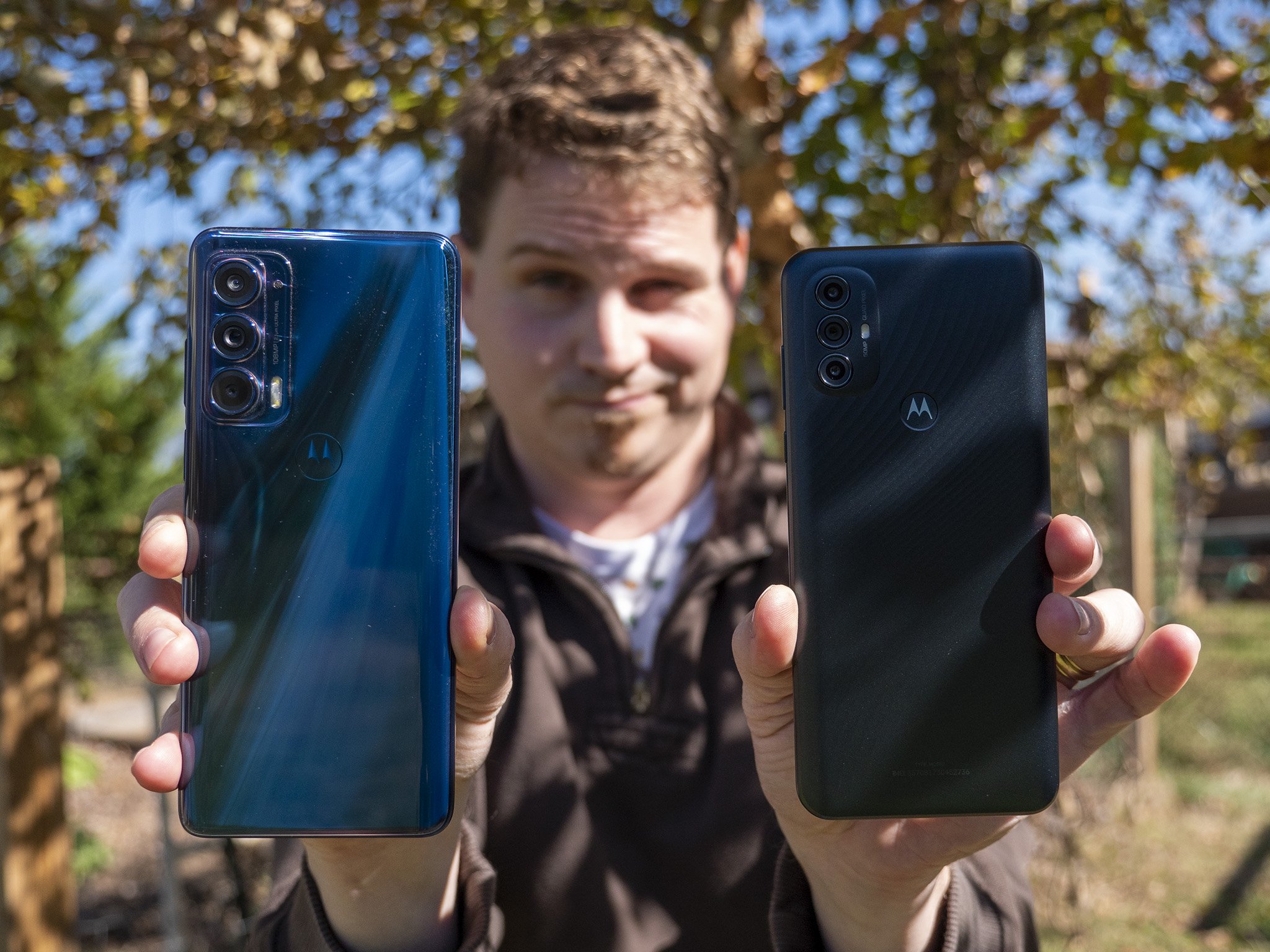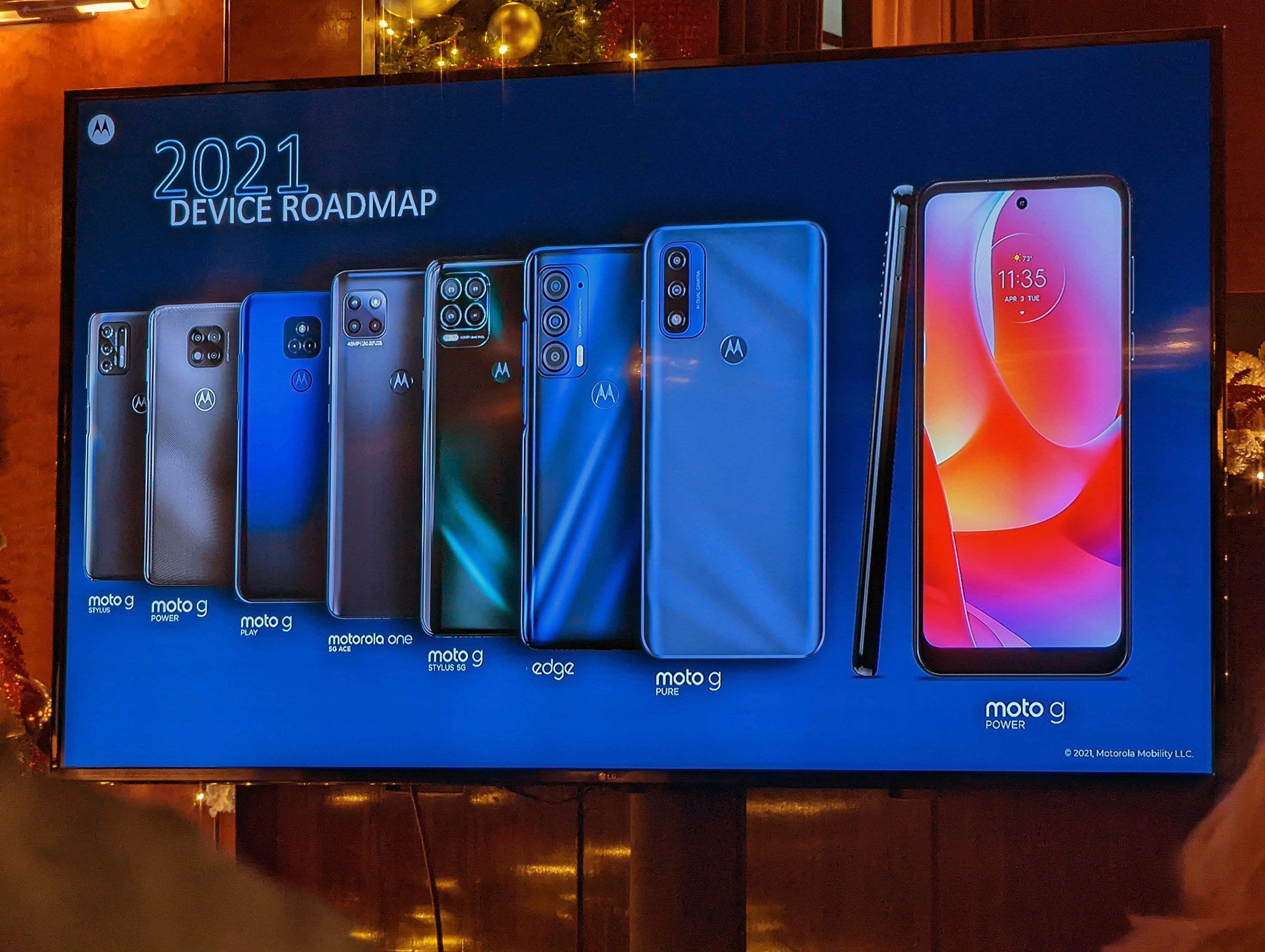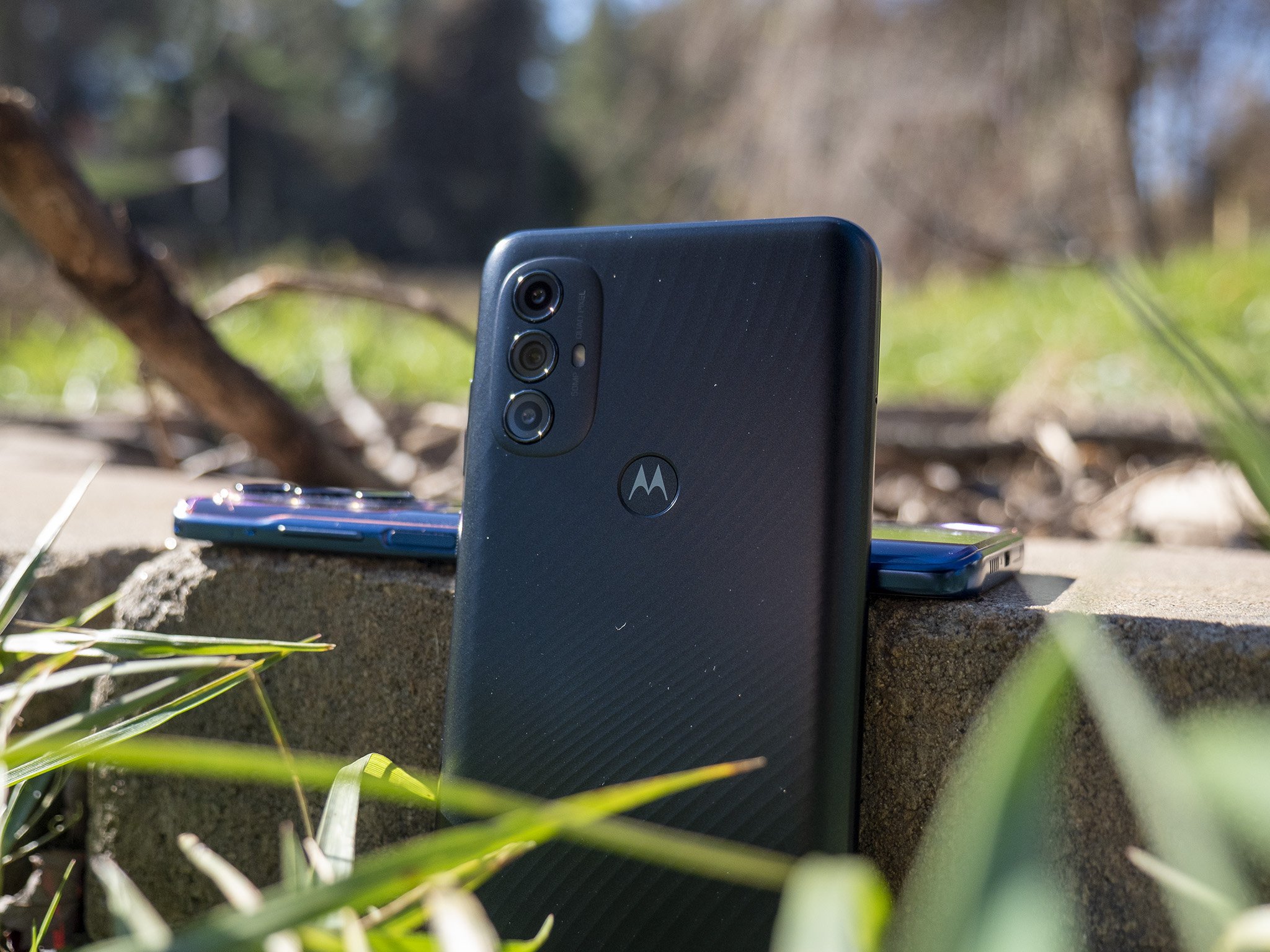How Motorola became number 3 against all odds
When you think of successful smartphone companies, what names come to mind first? Samsung, Apple, OnePlus, maybe even Google, right? But over the years, a well-known company that fell off the wagon has slowly been gaining steam again, catching up with and surpassing nearly everyone in the market.
It's Motorola, and, as of this time in late 2021, the company has achieved the coveted title of number three smartphone vendor in the U.S. after a year of explosive growth. But this didn't happen on the back of some innovative new flagship phone.
Motorola's success wasn't driven by foldables like the Galaxy Z Flip 3, powerful phones with award-winning cameras like Google's Pixel 6, or even uniquely sustainable phones like the Fairphone 4. Quite the contrary.
It was driven by the success of boring, everyday phones that do little more than meet expectations at an affordable price.
I sat down with Doug Michau, executive director of North American business development at Motorola, and had a chat about the company's business strategy, its 2021 portfolio, and what the future could bring for the venerable phone manufacturer.
This story isn't a sexy one.
It's not one filled with intrigue and daring. Instead, it's the classic "slow and steady wins the race," and it proves that even a felled figure can make a surprising comeback in a big way. The company makes some of the best cheap Android phones you can find, and it's here where the story begins.
I have the powerI recently attended the announcement event for the Moto G Power (2022), a $200 phone that's anything but exciting at first glance but, according to Michau, nails the points that consumers care about in this price range. Namely, a device with a big screen and long battery life; two things the Moto G Power (2022) certainly does right.
One might wonder why such a phone merits an event in order to launch it - myself and many others included - but the reality of the importance of this device becomes apparent the moment you look at the market.
The Moto G Power (2022) may not look like much, but it gets it right in two places that actually matter: big screen and great battery life.
According to Counterpoint Research, Motorola held a single-digit market share during the best of times before 2021. Prior to 2018, in particular, the company barely even made a blip on the radar when compared to OEMs like Samsung, L.G., and even the now-banned ZTE.
But the last 24 months have seen monumental shifts in the U.S. smartphone landscape. First, two of its biggest rivals in the business, Huawei and ZTE, were designated as national threats by the U.S. government. Of course, you can still buy phones from these companies, but many consumers are wary of purchasing from these companies after having their reputations tarnished in significant ways.
Other companies like HTC have pivoted to virtual reality and other markets where they still have a foothold, while companies like L.G. quit making smartphones altogether. Essentially, all of Motorola's big rivals in the U.S. have pulled out, leaving room for the company to silently build up strength as one of the few remaining options.
During this time, Motorola has gone from a single-digit market share to shipping 12% of all smartphones to U.S. customers in Q2 2021. If you compare that with Motorola's shipments for Q4 2020 - a mere 3% of the market during the busiest quarter of the year - you'll see how much change has quickly enveloped the company in a surprisingly short span of time.
Now, despite what feels like a long time as a consumer, 12 to 24 months isn't a long time for a phone's research and development cycle. The specifics of each phone's development timeframe might differ, but a company the size of Motorola can't change the direction of its trajectory - or, in this case, phone releases for the year - in the time span of just 12 months or so.
Michau said the company had switched to what he called an "always-on marketing campaign" in lieu of the changing market conditions, ensuring that its portfolio of phones was seen months after their debut, while most other smartphone companies tend to spend the bulk of their marketing dollars up-front at the time of a phone's launch.
Motorola isn't making the phone you want this year; it's making the phone you need.
In the short of it, while Motorola doesn't seem to have gone out of its way to put together a particularly tantalizing portfolio of devices for 2021, they've put together the right portfolio to make significant headway in market share. How much of this was intentional and how much is just a happy accident is anyone's best guess, but it's a genuine success that Motorola would be smart to capitalize on.
The stumbling block of innovationThe company often uses the term "meaningful innovation" to describe its efforts on its mid-range and entry-level phones, words that often feel like they ring hollow in the face of the competition. Phones like the Moto Edge (2021) would be fine in a bubble but are overshadowed by the competition in every meaningful way.
To me, Motorola has been one of the more interesting smartphone companies over the years. While it debuts its fair share of boring phones, devices like the semi-modular Moto Z line, the extremely customizable Moto X back in the day, and the stunning retro-chic Moto RAZR 5G stand out among the crowd of slabs on every store shelf.
Consumers don't need expensive and unique phones right now. They just need a phone that works for as little money as possible.
But, as the market is so clearly showing, expensive and unique phones aren't what consumers need right now. No, after more than a year and a half of job losses and the chaos spurred on by the global pandemic, people don't need to spend a thousand dollars on a new phone. They just need a phone that works for as little money as possible.
As Michau put it, "your dollars are best spent on Motorola because you get more benefit with all the features and the quality of the product."
This is where some of Motorola's competition has floundered in prior years. Companies like OnePlus, which used to offer a flagship-grade phone at well under $400, went far into the "proper" flagship after seemingly no time at all and now sells its phones at what has become a normal near-$1,000 price tag.
OnePlus introduced the Nord series in 2020 and followed it up with the Nord 2 this year, giving the company a much-needed re-entry back into the mid-range segment that Motorola has begun to dominate.
Over 70% of phones shipped cost less than $400, a reality that Motorola's catalog of phones fits squarely into.
Last September, research and market analysis firm International Data Corporation (IDC) showed that over 70% of phones shipped were to fall in the entry-level to mid-range categories. In a nutshell, most consumers weren't willing to spend more than $400 on a new smartphone, and that data appears to have been correct throughout most of 2021.
Given that only one of Motorola's 2021 releases costs more than $400 - that's the Motorola Edge (2021), which technically costs $700 even though its introductory price was $500 - it's pretty clear why Motorola has been so successful this year.
A year without a flagshipGiven Motorola's flirtations with greatness with its flagship phones in years previous, the company failed to launch a true flagship phone in 2021. Michau's answer to this was a pretty clear ode to the stagnation of innovation in the market as a whole. "For the U.S. market, when we looked at exactly what our channel partners and what consumers are looking for," he said, "we just felt that we didn't have the right product."
Motorola didn't feel like it had a flagship phone worth releasing, so it simply didn't release one.
That certainly seems to speak volumes about the products that Motorola does actually release and the lengths they're willing to go to produce a product that consumers will actually buy. Whether reality matches up with this year's apparent realization of the folly of releasing imperfect flagship products, or if the supply chain constraints placed on everyone and everything played a larger part, we may never know.
At last week's Motorola event, the company took the time to announce 312 Labs, a new initiative designed to further entrench the company in research, design, engineering, and general innovation of products coming to market.
It's all part of Lenovo's promise to double the R&D budget, and Michau specifically said, "we're going to double our R&D, and a large part of that is actually funneling into our 312 Labs."
Lenovo is doubling R&D budget, and a "large part" of that is being pumped into Motorola's 312 Labs.
312 Labs isn't a physical "lab" per se, but it is a way for Motorola and Lenovo to hopefully push out better products in a more expedient manner. Many of these products might not even be smartphones, as evidenced in the announcement of the new Snapdragon Spaces A.R. platform and Motorola's involvement with Qualcomm on the project.
We're not getting a new foldable from Motorola this year and may not even see one next year, but it's entirely likely that we could see something far more interesting from the company in 2022.
Motorola believes it is still a brand that people have a deep emotional attachment to and says it's working to keep people guessing at what's going to be next down the pike.
Motorola believes it is still a brand that people have a deep emotional attachment to.
The lack of a flagship this year doesn't seem to be hurting Motorola in any real way whatsoever - quite the opposite, if numbers paint a clear picture - but, as we pointed out last year, the company needs to continue to work on supporting its products long-term instead of just marketing them for a long time.



